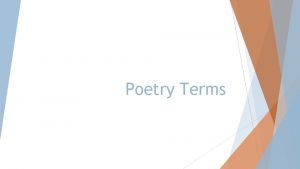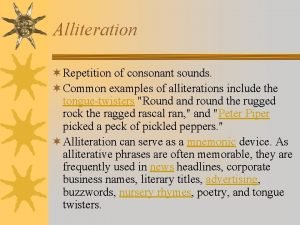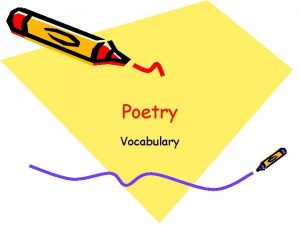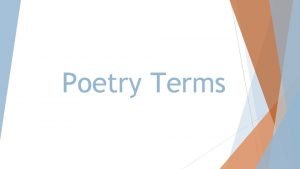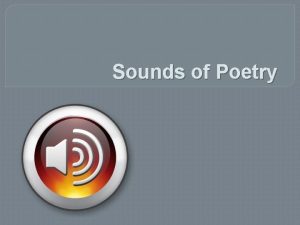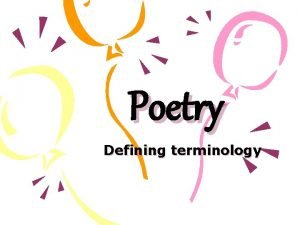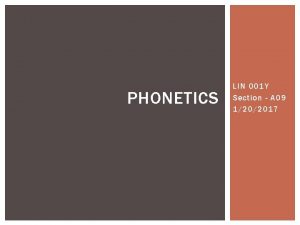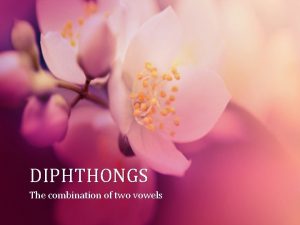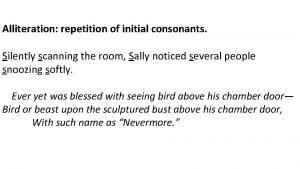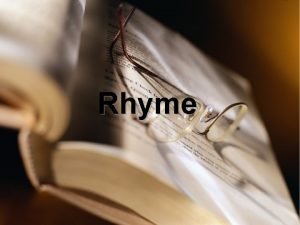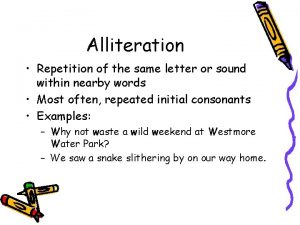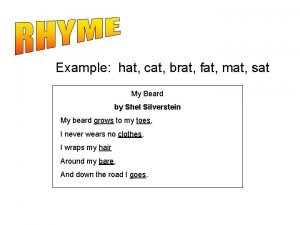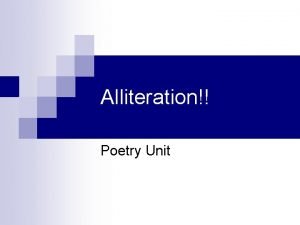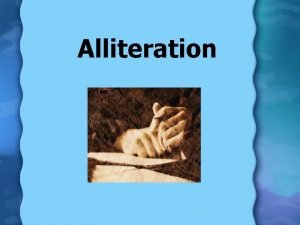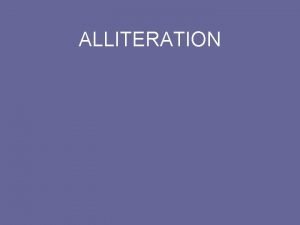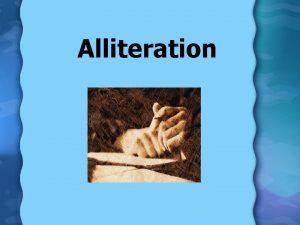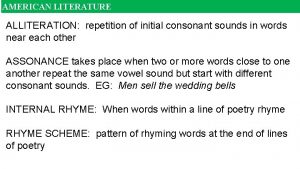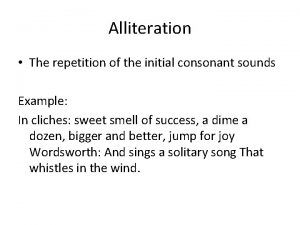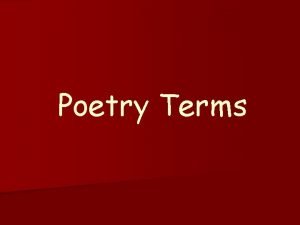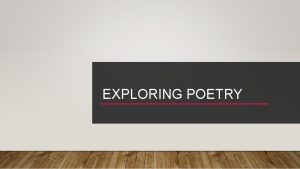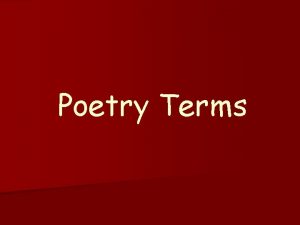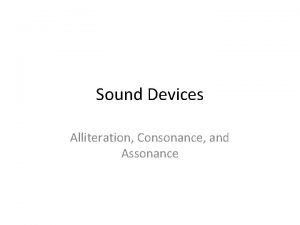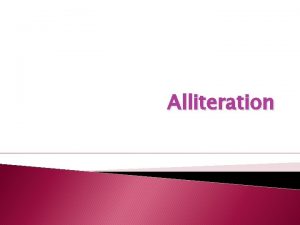Sounds of Poetry Alliteration The repetition of initial
















- Slides: 16

Sounds of Poetry

Alliteration The repetition of initial sounds at the beginnings of neighboring words. Poets use alliteration to call attention to a phrase and fix it into the reader's mind-- it is useful for emphasis.

Alliteration Examples Carrie’s cat clawed her couch creating chaos. Ralph’s reindeer rose rapidly and ran round the room.

Onomatopoeia (On-ah-mah-tah-PEE-ah) Refers to words whose sound is suggestive of its meaning. Poets use this figure of speech to convey and emphasize unusual and vivid images.

Onomatopoeia Examples Achoo Ahem Bah Bam Bang Bark Boom Bubble Bump Buzz Commercial

Rhyming in Poetry

From Green Eggs and Ham Do you like green eggs and ham? I do not like them, Sam-I-am. I do not like green eggs and ham. Would you like them here or there? I would not like them here or there. I would not like them anywhere. I do not like green eggs and ham. I do not like them, Sam-I-am. Would you like them in a house? Would you like them with a mouse? I do not like them in a house. I do not like them with a mouse. I do not like them here or there. I do not like them anywhere. I do not like green eggs and ham. I do not like them, Sam-I-am.

Rhyme The existence of the same or similar sounds in two or more words or phrases. Rhymes produce a memorable effect, create shifts, or set the mood.

Rhyme Scheme A pattern of rhyming sounds at the end of each line of poetry. Rhyme scheme is identified using letters. Start with “a”. Each time the rhyme changes, the letter also changes.

Rhyme Type • Exact/True Rhyme: Two words sound like they rhyme. Ex: (red/bread, through/blue) • Slant/Approximate: Rhymes that are close, but not exact. Ex: (lap/shape, moved/loved) • Eye: Spellings look alike, but pronunciations differ. Ex: (rough/dough, Venus/menus)

Rhyme Placement • End Rhyme: Rhyme occurs at the end of the lines. • Internal Rhyme: Rhyme occurs within a line or passage.

The Watch By Frances Cornford I wakened on my hot, hard bed; Upon the pillow lay my head; Beneath the pillow I could hear My little watch was ticking clear. I thought the throbbing of it went Like my continual discontent; I thought it said in every tick: I am so sick, so sick: O death, come quick, Come quick, come quick.

Read #1 �Paraphrase the poem. �Identify the speaker of the poem. �Mark the rhyme scheme. �What do you notice about the content of the poem when the rhyme scheme changes?

Read #2 �Underline examples of onomatopoeia and alliteration. �What effects do these devices have on the meaning of the poem?

Read #3 �What is theme of the poem? �How do the sound effects help to develop theme?

“The Watch” Prompt PROMPT: Using Cornford’s poem “The Watch, ” explain how the poet establishes theme using alliteration, onomatopoeia, and rhyme. Develop a three-pronged thesis statement that answers this question. Be sure to include the actual theme in your thesis statement.
 Two words with the same vowel sound placed near one another
Two words with the same vowel sound placed near one another The repetition of consonant sounds
The repetition of consonant sounds The repetition of initial consonant sounds
The repetition of initial consonant sounds Cold alliteration
Cold alliteration The repetition of beginning consonant sound
The repetition of beginning consonant sound 2 examples of alliteration
2 examples of alliteration The repetition of initial consonant sounds
The repetition of initial consonant sounds The repetition of beginning sounds
The repetition of beginning sounds The repetition of similar vowel sounds
The repetition of similar vowel sounds Oral sounds and nasal sounds
Oral sounds and nasal sounds Diphthongs sounds are the combination of two vowel sounds
Diphthongs sounds are the combination of two vowel sounds The repetition of initial consonants
The repetition of initial consonants Vowel repetition
Vowel repetition Repetition of the same letter
Repetition of the same letter Repetition of beginning sounds of words
Repetition of beginning sounds of words Site:slidetodoc.com
Site:slidetodoc.com Repetition of ending sounds of words
Repetition of ending sounds of words
